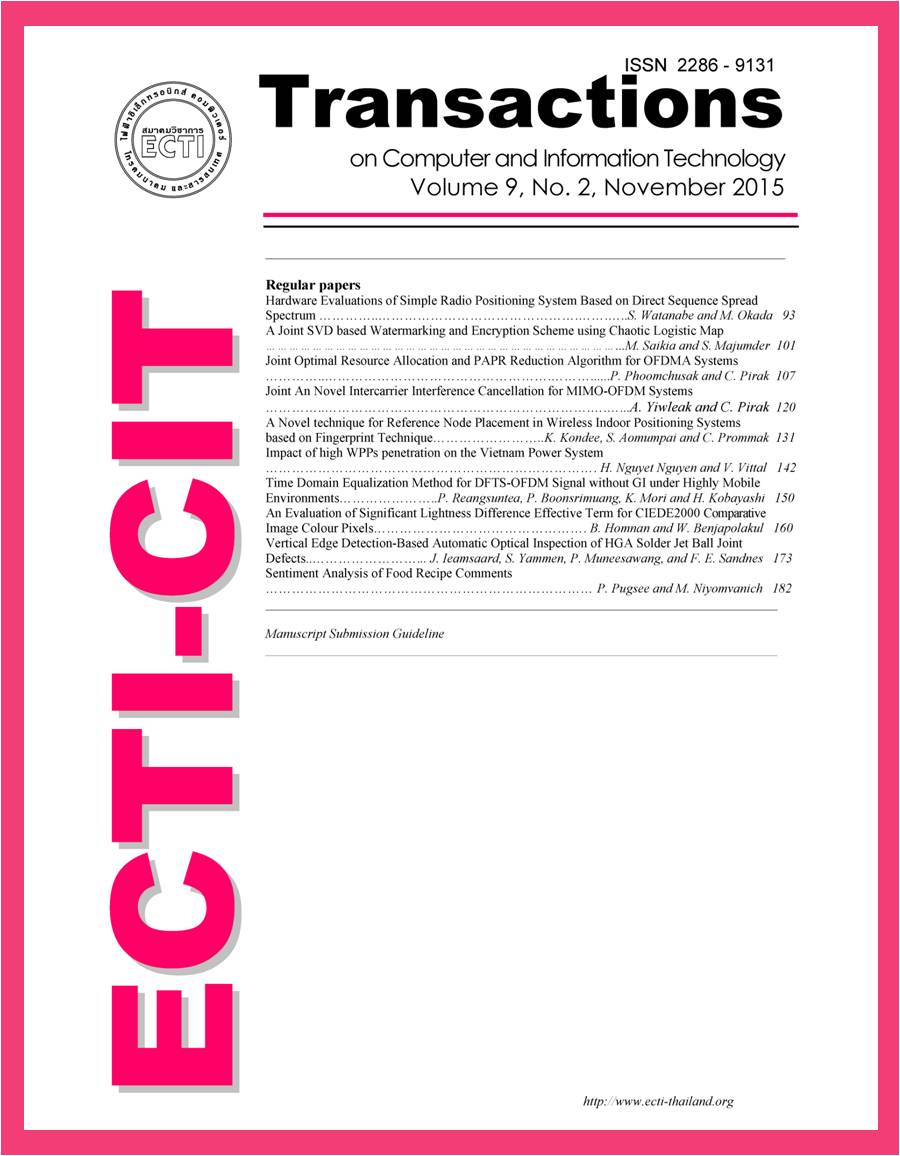Time Domain Equalization Method for DFTS-OFDM Signal without GI under Highly Mobile Environments
Main Article Content
Abstract
In highly time-varying fading channel, the Discrete Fourier Transform Spreading Orthogonal Frequency Division Multiplexing (DFTS-OFDM) signal would be damaged significantly by the inter-channel interference (ICI) due to the loss of orthogonality among subcarriers which leads a fatal degradation of bit error rate (BER) performance. To solve this problem, this paper proposes a time domain equalization (TDE) technique in conjunction with a time domain channel impulse response (CIR) estimation method for the DFTS-OFDM signal without using a guard interval (GI). The features of proposed method is to employ a time domain training sequence (TS) both for the estimation of time domain CIR at every sampling time and for removing the inter-symbol interference (ISI) incurred in the multipath fading channel. The proposed method also employs the TDE with a maximum likelihood (ML) estimation method in the demodulation of received time domain signal at every symbol instead of using the conventional Minimum Mean Square Error-Frequency Domain Equalization (MMSE-FDE) method. This paper presents various simulation results to demonstrate the effectiveness of proposed demodulation method for the DFTSOFDM signal without GI as comparing with the conventional MMSE-FDE and TDE methods both of using
GI under highly mobile environments.


